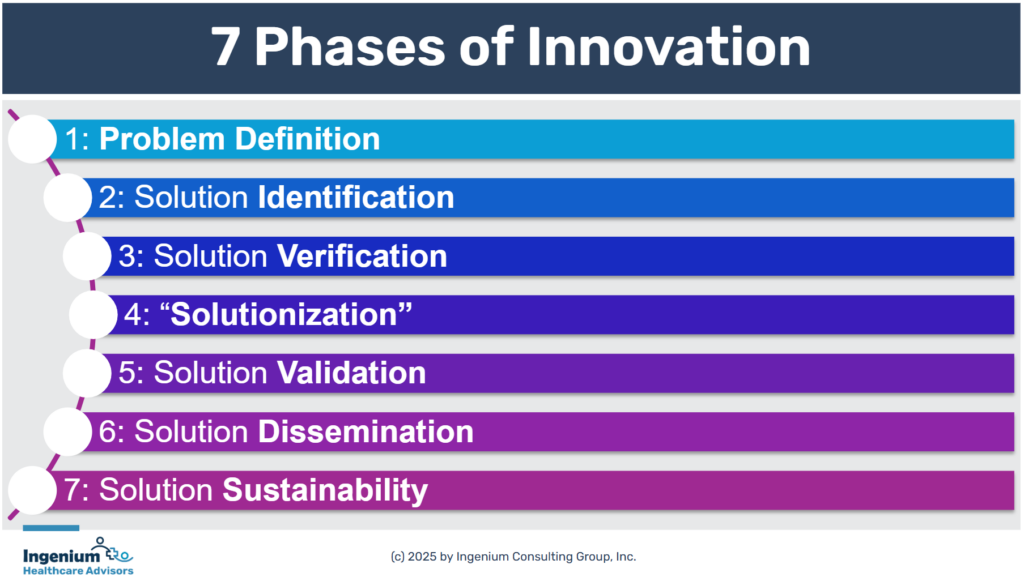From Urgent Problems to Bold Solutions:
Cultivating an Innovation Mindset
At a recent Innovation Workshop for executives, a powerful truth emerged for the CEOs: innovation is not an event—it’s a mindset and skillset that leaders must model and nurture throughout their organization.
Together with my colleague, Christian Milaster, we challenged the group of health center leaders to think differently about innovation.
What does innovation mean to you? The responses from across 30 organizations were illustrative—phrases like “creative solutions,” “thinking outside the box,” “solving complex problems in uncommon ways,” and “doing things others haven’t thought of” pointed to a shared desire among leaders to disrupt the status quo in service of their missions.
Innovation doesn’t begin with chasing shiny new things or adopting the latest trends. It begins with clarity of purpose—with defining the “why”, understanding the most pressing problems your organization faces, and building solutions around those priorities.
Seven Phases of Innovation
Our 7 Phases of Innovation are a roadmap that guides leaders from problem definition all the way to sustaining innovative solutions.

The first few steps—defining the problem and identifying potential solutions—are where most organizations either stall or jump ahead too quickly. Instead of fully uncovering the root causes, they leap to solutions, sometimes imported from other organizations or entirely different industries, and often designed for very different contexts. Innovation can include adopting or adapting solutions from other contexts, but be intentional in tailoring them to your organization’s culture, structure and specific desired outcomes.
There are several key leadership disciplines in innovation, including: “Fail fast and succeed quickly”.
Leaders should look for opportunities to innovate around their strategic, financial, and clinical priorities. Further, when you are verifying that a solution is right for your organization, delineate the strategic, business and clinical case. As my colleague Christian likes to say:
You’ll know you have an awesome solution on your hands when the CEO, the CFO, and the CMO (Chief Medical Offer) are all excited about it.
As you are thinking through the situation, we encourage leaders and teams to ask:
- What impact will this problem have? (in the short term and the longer term)
- Who is affected? And how?
- How will we measure the success of the innovation?
These are not analytical questions—they are leadership, direction-setting questions.
Innovation in a Crisis
Over the course of the leadership workshop, we also explored a critical mindset shift: Use crises as catalysts.
Change requires energy, and nothing fuels change like urgency!
When your organization faces a crisis—financial strain, staffing challenges, outcome results slipping—that’s your moment to harness the energy and engage your team in designing new approaches.
In another edition, I’ll dive into how to bring those solutions to life—from verifying assumptions to managing change and sustaining momentum.
As leaders, your role is not to have all the answers—but to cultivate a culture where problems are seen as opportunities, where curiosity is rewarded, and where solutions are built for delivering the results that matter most.
Innovation is not a one-time project. It’s your leadership in action.

If you’d like to receive these Inspirations in your inbox every other week, you can subscribe to Kathy’s Excellence Advantage Inspirations Newsletter.
Kathy Letendre, President and Founder of Letendre & Associates, advises organizations and leaders to create their excellence advantage.
Contact Kathy by phone or text at 802-779-4315 or via email.

